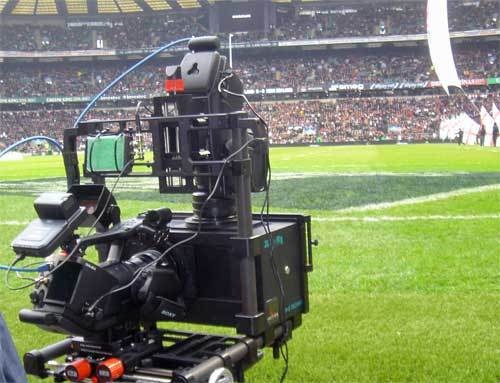DVB Plans to Complete 3DTV Spec by November

AMSTERDAM: Europe’s digital broadcasting standards body said it would complete a 3DTV specification by November, according to press reports. The DVB said it would likely follow approval of the commercial requirements for a frame-compatible 3DTV system, Broadband TV News said. A sub-group within the DVB is defining those requirements now, said its chairman David Wood.
“We believe the die has been cast on ordered and standardized broadcast and cablecast 3DTV for the frame-compatible community,” said Wood said at a press conference at IBC in Amsterdam.
This summer’s 2010 World Cup 3D video was delivered in the frame-compatible format, in which two distinct left- and -right-eye images are captured, encoded and transmitted by TV providers. Members of the European Broadcasting Union, who use the DVB transmission standards, have indicated a preference for a service-compatible 3DTV system.
The service-compatible format is currently used by European broadcasters to deliver HDTV (via the DVB-T2 standard), and would require additional data for creating 3D images on 3DTV sets. The frame-compatible system, while it would work on the existing HDTV architecture, requires more bandwidth than the service-compatible format. More than half of European broadcasters polled by the EBU said they’d prefer the service-compatible format.
The DVB’s Dr. Peter Siebert told IPTV Newsthat a service-compatible 3DTV spec would be completed by this time next year.
See...
August 12, 2010: “ESPN Aims to Deliver Discrete Left and Right 3D Feeds”
Frame-compatible distribution is the 3DTV delivery method du jour, but ESPN would like to step it up.
July 26, 2010: “World Cup Frame-compatible 3DTV Post Mortem”
Providing 3D video images involved capturing separate video streams for left- and right-eye views in JPEG2000 compression, converted into an HD SDI frame-compatible output encoded in MPEG-2.
July 6, 2010: “EU Broadcasters Prefer Service-compatible 3DTV”
A majority of broadcasters in European Union countries prefer a 3D format other than the side-by-side stereoscopy currently used by most operations.
July 6, 2010: “ITU Illustrates Frame-compatible 3DTV”
“Each eye’s picture appears on the 3D TV screen, one after the other. Images are sent to the eyes at a rate of around 50-60 images per second, making the process imperceptible to the viewer.”
June 17, 2010: “Comcast Will Switch to MPEG-4 for 3DTV in August”
Comcast plans to transmit 3D content exclusively using MPEG-4 H.264.
May 10, 2010: “Korea to Launch World’s First 3D Terrestrial Broadcasts May 19”
South Korea’s broadcast regulator announced that four TV networks would commence 3D transmissions May 19.
January 20, 2010: “Building a 3DTV Programming Guide”
“We’re trying to avoid floating the guide in front of the action. We discovered that it was an improvement to push the guide behind the screen and let the action play over it.”
January 20, 2010: “A 3DTV Update from the MPEG Industry Forum”
The emerging MPEG-4 MVC (multiview coding) scheme supports the simulcast of independent, left-eye/right-eye views.
Get the TV Tech Newsletter
The professional video industry's #1 source for news, trends and product and tech information. Sign up below.
